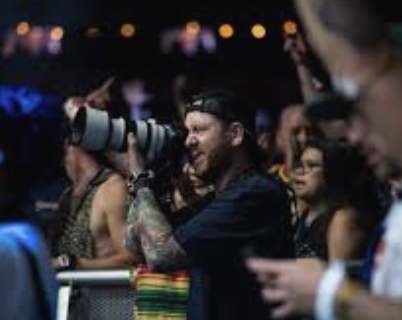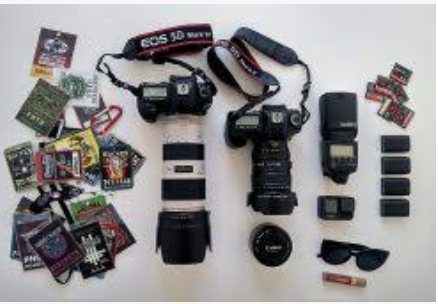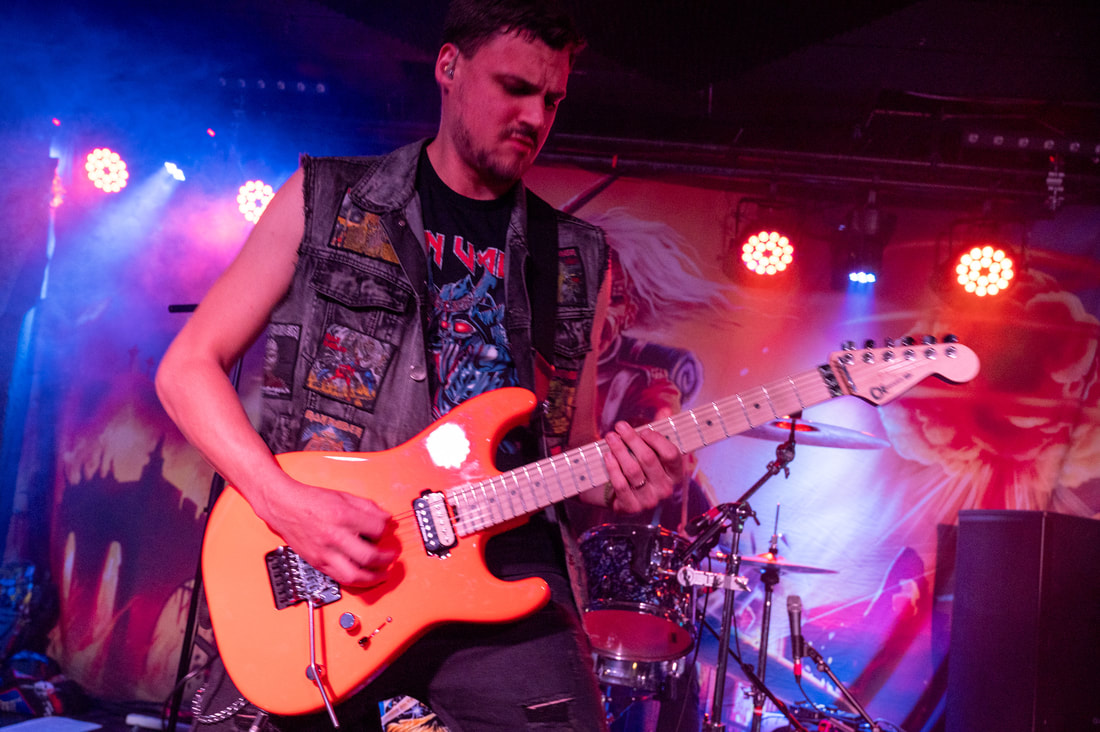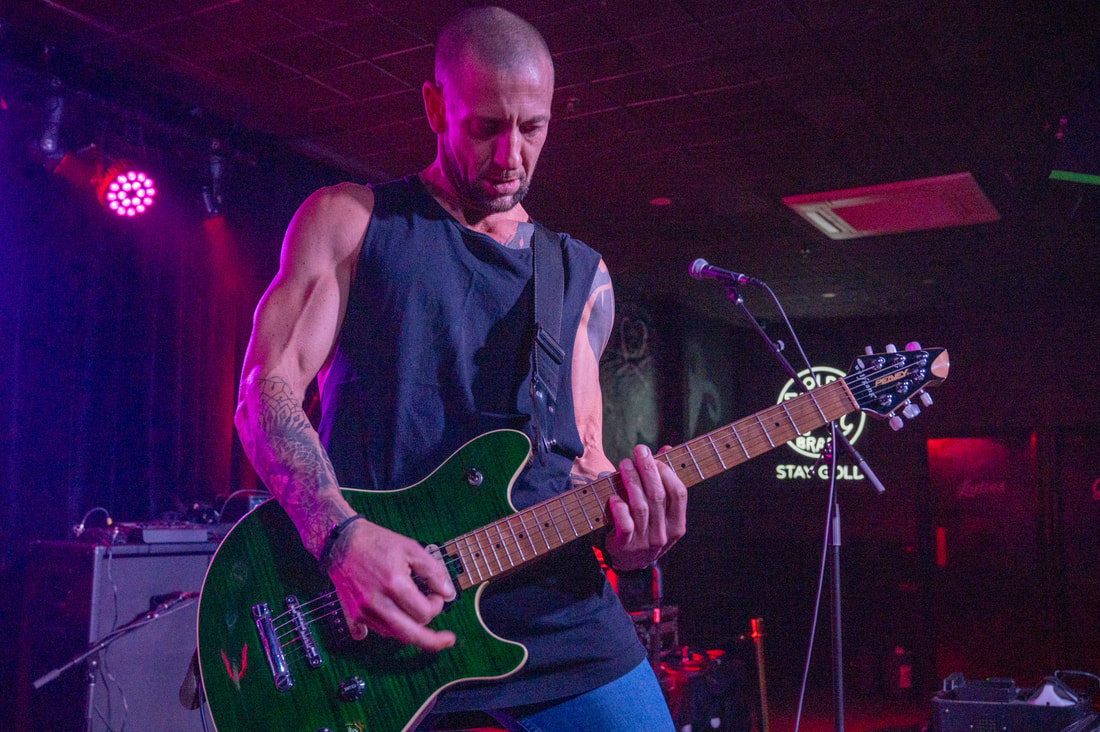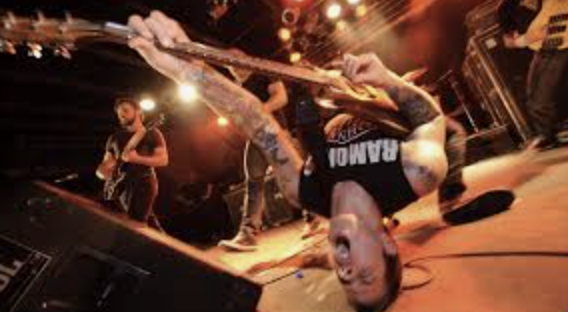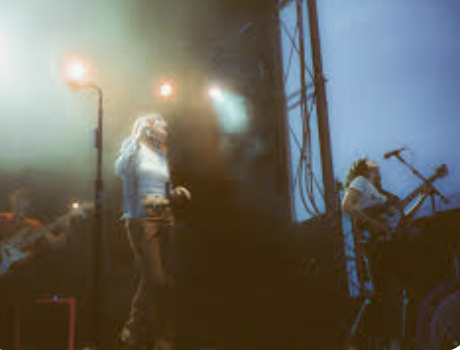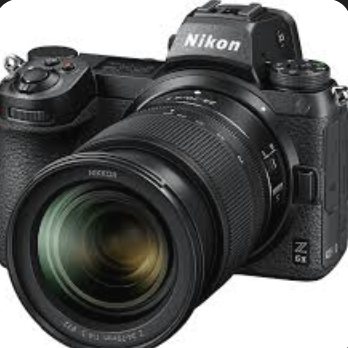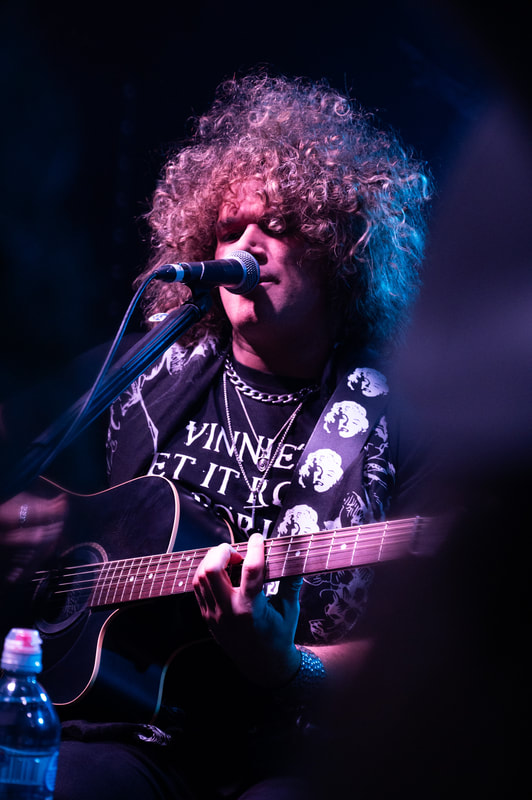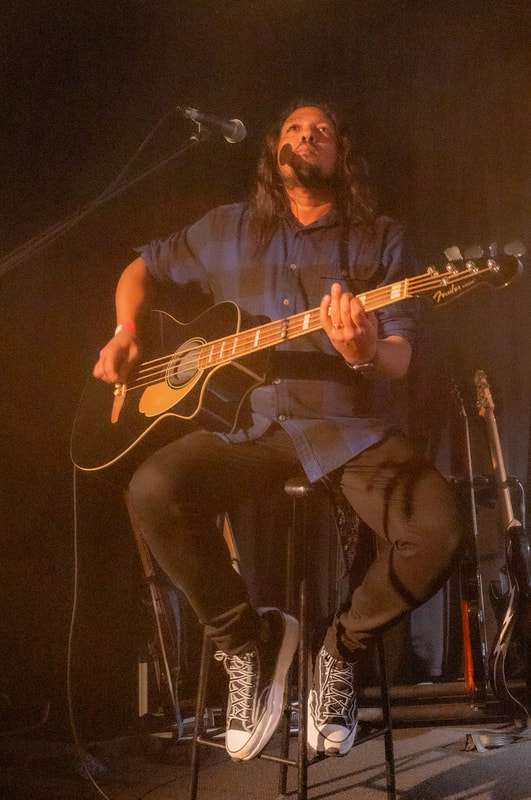|
My journey into live music photography began, as many things do, with passion. Growing up, I was constantly drawn to live music, captivated by the energy of the crowd, the unpredictable nature of each performance, and the powerful connection between musicians and their fans. I didn’t know it at the time, but this fascination would eventually lead me to where I am today capturing those very moments through my lens.
The Start: From Entertainment Management to Photographer: Initially, my love for music led me to Collarts, where I pursued a Bachelor's in Entertainment Management. I wanted to understand the inner workings of the industry—the business side of live music. I thought my future would be behind the scenes, managing artists or working events. But while I enjoyed learning about the industry, something didn’t quite click. I found myself wanting to be closer to the action, to immerse myself in the heart of live music rather than just manage it. That’s when everything changed. Shortly after I graduated, I found out that Collarts was launching a Bachelor's in Photography. It felt like a lightbulb moment—I could combine my love for live music with a creative outlet like photography. Without hesitation, I applied and was accepted. Suddenly, the pieces began falling into place. My First Gig: The Gasometer Hotel and Bentham’s Head: Armed with my camera, I set out to build my skills, and my first real gig as a photographer was at the Gasometer Hotel, shooting Bentham's Head. This was the first time I had the chance to use everything I’d learned in a live setting. It was exhilarating and nerve-wracking at the same time. I remember walking into the venue, unsure of how the night would unfold but eager to make the most of the opportunity. The gig was an small heavy metal gig, and the atmosphere was perfect for testing my skills. I focused on capturing not only the performers but also the raw emotions from the audience. Every moment seemed like a potential shot, and while my technique was far from polished, I quickly realized that live music photography is about more than just pointing a camera and clicking. It's about timing, anticipation, and most importantly, feeling the music as much as photographing it. Evolution: Developing My Style As I continued to shoot more gigs, I started to evolve as a photographer. Early on, I was still experimenting with angles, lighting, and timing. I wasn’t yet fully confident in my own style, so I spent a lot of time watching other photographers and learning from their movements. I observed how they positioned themselves to get the best angles, how they interacted with the performers, and how they waited for just the right moment. Through trial and error, I found my rhythm. Over time, I transitioned from just snapping shots to telling a story through each image. One particular moment that marked a shift in my journey was during an Ecos of Pink Floyd tribute show at the Corner Hotel. The lighting hit just right, and I captured one of my best photos, now affectionately called "Mr. Hand." That shot became a defining piece in my portfolio. I have also entered the photo “Mr Hand,” into a photo competition. Where I Am Today: Today, live music photography is more than just a creative outlet—it’s a way for me to connect with the music I love and share it with others. From those first shaky shots at the Gasometer Hotel to developing my own unique style, the journey has been nothing short of incredible. Live music photography is now my business and it is called – Kaz-Marie Photography and I cannot still believe it! Looking forward, I’m excited for the next gig, the next band, and the next opportunity to capture that perfect moment when music and emotion collide.
0 Comments
When it comes to live music photography, having the right gear ensures you're prepared to capture dynamic moments in fast-paced, low-light environments. Here's a breakdown of the essential equipment I rely on:
1. Camera: Nikon Z6ii The Nikon Z6ii is my go-to camera for live music photography. Its 24.5MP full-frame sensor excels in low-light conditions, which is crucial for capturing live gigs where lighting can be unpredictable. The camera’s dual EXPEED 6 image processors ensure I can shoot at high speeds (up to 14 fps), which helps freeze motion during high-energy performances. It also boasts excellent ISO performance, reducing noise even when I push it to higher levels, allowing me to maintain sharpness and clarity. Another great feature of the Z6ii is its in-body image stabilization (IBIS), which helps when shooting handheld in low-light conditions or when I want to slow down the shutter speed to capture more light without worrying about camera shake. 2. Lens: Nikkor 24-70mm f/2.8 My lens of choice is the Nikkor 24-70mm f/2.8. It's incredibly versatile, offering me a good range for both wide-angle shots of the entire stage and zoomed-in, intimate portraits of individual performers. The constant f/2.8 aperture allows for fast shutter speeds and lets in plenty of light, which is critical in dimly lit venues. The focal length range is ideal for moving around the venue, enabling me to adapt quickly from close-ups to wider shots without switching lenses. This versatility is a huge advantage when you're on the go and need to be reactive to the action on stage. 3. Earplugs Live music is loud, and being exposed to such high decibel levels for extended periods can damage your hearing. Especially when you are next to the speakers, when you are in the photo pit. I always carry a pair of musician-grade earplugs. These protect my ears without muffling the sound too much, allowing me to still enjoy and feel the energy of the music. 4. Spare Batteries A single battery won't cut it, especially during long gigs. The Nikon Z6ii can chew through batteries faster when shooting continuously at high frames per second or recording video. Having at least two or three spare batteries on hand ensures I don’t miss a moment due to a drained battery. 5. Spare SD Cards It's easy to underestimate how much storage you'll need, especially if you're shooting in RAW format, which takes up more space than JPEGs. I always carry multiple high-speed SD cards with at least 32GB of capacity. The high-speed cards ensure that I can shoot continuously without the camera buffer slowing me down, while the extra capacity ensures I have enough room to cover the entire event. 6. Camera Strap or Harness A reliable camera strap or harness is essential for comfort, especially when moving around the venue. A good strap also helps prevent strain on my neck and shoulders during long shoots. 7. Lens Cloth and Cleaning Kit Gigs can be messy environments with dust, smoke from smoke machines, or even spilled drinks. I always carry a microfiber lens cloth and a small lens cleaning kit to ensure my lenses stay clean and smudge-free, which is critical for maintaining image quality. 8. LED Torch Navigating dark venues or your camera bag between songs can be challenging, so I keep a small LED torch handy. It makes it easier to change settings or swap gear quickly without fumbling around in the dark. 9. Small Backpack I carry all my gear in a small but functional camera backpack that allows easy access to my camera and lenses. It needs to be compact enough not to get in the way in crowded venues but spacious enough to hold my essentials. Having compartments helps me keep things organized, so I can quickly grab what I need during the performance. Having a combination of reliable camera gear, practical accessories, and protective tools allows me to focus on capturing the essence of the live music experience. With this setup, I'm always ready to adapt to the challenges of the venue, lighting, and atmosphere. 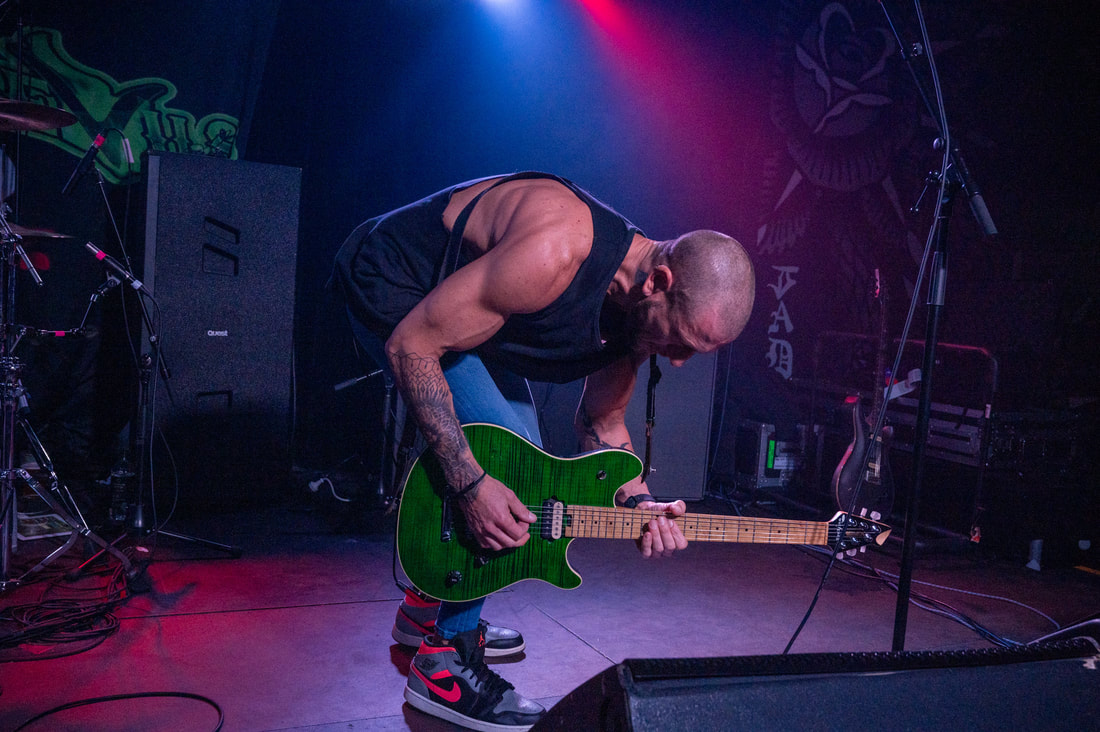 Music photography can be an exhilarating experience, but it comes with unique challenges. Whether you're shooting at intimate gigs or massive festivals, these practical tips will help you navigate common pitfalls and elevate your skills. Do’s! 1. Respect Crowd Etiquette: One of the key aspects of live music photography is working within the audience’s space. It’s essential to respect the crowd around you while capturing your shots. Keep your movements subtle, avoid obstructing people’s view for extended periods, and try to remain as unobtrusive as possible, especially during quieter moments. If you're moving through the crowd to get different angles, make sure to do so with politeness and awareness of others’ enjoyment. 2. Understand the Venue’s Lighting: Low light conditions are a standard challenge in music photography, especially in smaller venues or during atmospheric performances. To overcome this, familiarize yourself with your camera settings. Shoot in RAW format to give yourself flexibility in post-processing. Learn to adjust your ISO, aperture, and shutter speed to compensate for the low light, but avoid setting your ISO too high, as it can introduce graininess into your images. Using a fast lens (with a wide aperture, such as f/1.8 or f/2.8) can help capture more light while keeping the artist in focus. 3. Develop Relationships with Venue Staff: Building good relationships with venue staff, including security and sound engineers, is invaluable. Be friendly and respectful, and always check in with them upon arrival. They can often provide useful advice on the best spots to shoot from or lighting cues. Establishing trust with the staff ensures smooth access to certain areas and fosters long-term cooperation. It also sets the right professional tone for potential future bookings. 4. Get Familiar with the Artists: Before heading to a gig, research the band or artist. Understanding their music and style will help you anticipate key moments during the performance. Knowing when a guitarist is likely to pull off a big solo or when the vocalist tends to move dramatically can make a significant difference in your ability to capture the perfect shot. It also helps build rapport with the musicians, who will appreciate your understanding of their work. 5. Move Around for Dynamic Shots: While it’s tempting to plant yourself in one spot, moving around the venue can provide you with a variety of angles and perspectives. Experiment with wide shots to capture the entire band and crowd energy, as well as close-ups of individual performers for more intimate moments. Pay attention to how lighting hits different members of the band, as certain setups can create visually stunning images. Don’ts 1. Don’t Use Flash Without Permission Using flash during a live performance is usually frowned upon, as it can be distracting to both the performers and the audience. Some artists and venues outright ban it. Even if it’s allowed, it often disrupts the atmosphere that the stage lighting creates. Instead, use the available light creatively and rely on your camera’s sensitivity to low light. 2. Don’t Block the Stage or Audience: It can be easy to get so caught up in getting the perfect shot that you unintentionally block the stage or audience. Always be mindful of where you’re standing. Stay out of the way of the performers and avoid obstructing the view for fans who have paid to see the show. If you’re in the pit or close to the stage, try to minimize your time in any one spot, especially if you’re in front of key audience areas. 3. Don’t Forget Ear Protection: Live gigs are loud, and standing near the stage can subject you to dangerously high sound levels. Invest in a good pair of earplugs that reduce noise without muffling sound quality. Over time, consistent exposure to high-decibel levels can cause hearing damage, so ear protection is vital. 4. Don’t Neglect Post-Production: Post-processing is as important as the actual shoot. Don't rush the editing process; take time to fine-tune your images. Adjust brightness, contrast, and colour balance to bring out the best in your photos. However, avoid over-editing or adding filters that distort the authenticity of the image. Strive for natural results that capture the essence of the performance. 5. Don’t Be Afraid to Take Risks: While it’s essential to get safe, well-composed shots, some of the best music photography comes from taking creative risks. Experiment with different angles, motion blur, or silhouettes. The unique, unexpected shots are often the ones that stand out in your portfolio. By following these practical do’s and don’ts, you’ll be well on your way to capturing striking and memorable live music photos while maintaining professionalism and respect for the performers and audience alike. Live music photography has evolved significantly over the years, transforming from a niche artistic pursuit into a mainstream form of visual storytelling. The progression from film to digital technology has revolutionized the craft, enabling photographers to capture live performances with unprecedented speed and quality. Social media has further amplified its influence, making concert photography more accessible and widely appreciated. Let’s explore the key milestones in this evolution and the effects of these changes on the field.
The Early Days: Film Photography! In its early days, concert photography was primarily captured on film, and the limitations of this medium meant that photographers needed to be highly skilled and resourceful. Using film required a keen understanding of light, composition, and timing since there was no way to instantly review shots. Photographers had to rely on experience and intuition, balancing low-light conditions with unpredictable stage movements. Iconic concert photographers like Jim Marshall, who captured classic rock legends such as Jimi Hendrix and The Rolling Stones, became known for their ability to seize fleeting moments on stage, turning them into timeless images. The process was labour-intensive and costly, involving developing and processing film rolls and printing images in a darkroom. The results, however, were often worth the effort—concert photos from the 1960s and 1970s remain some of the most powerful visual documents of music history. Photographers were often closely embedded with bands and had access to backstage areas, allowing them to create intimate portraits that extended beyond the stage performances. The Digital Revolution The shift to digital photography in the late 1990s and early 2000s changed concert photography dramatically. With the advent of high-quality digital cameras, photographers could now take hundreds, even thousands, of shots in a single show without worrying about film costs. Digital sensors improved lowlight performance, making it easier to capture sharp images in dimly lit live music venues, a long-standing challenge for film photographers. This transition allowed for quicker turnarounds, as images could be edited on a laptop right after a show and shared with editors or published online almost immediately. The days of waiting for film to develop were over. Additionally, the ability to review shots on the camera’s screen helped photographers adjust their settings in real-time, significantly increasing the likelihood of getting the perfect shot. Burst shooting modes, faster autofocus, and higher ISO capabilities further enhanced live music photography, opening the door to more creative experimentation. The Role of Social Media! Arguably the most significant factor in recent years has been the rise of social media platforms like Instagram, Facebook, and Twitter, just to name same of the social media. These platforms have democratized live music photography, enabling fans and photographers alike to share their work with a global audience. Where once only professional photographers had the means and platform to showcase their work, now anyone with a decent camera or even a smartphone can capture and upload concert moments for thousands or millions to see. This shift has had both positive and negative effects. On the positive side, social media has given concert photographers a new avenue to promote their work and build personal brands. Photographers can connect directly with fans, bands, and industry insiders, often leading to new opportunities. Social media algorithms that favour visual gig means that concert photographers are more likely to get noticed, and viral posts can quickly elevate a photographer’s career. However, the downside is the saturation of concert images online. The value of professional concert photography has diminished in some cases, as amateur shots flood platforms, making it harder for professionals to stand out. Furthermore, the focus on likes, shares, and followers can sometimes shift attention away from the artistry of photography toward achieving viral status. As well there is another downside and that is, that the photo can be edited to make the female (for example), can end up looking nothing like she looks like on the stage. Conclusion! Concert photography has evolved dramatically, from the labour-intensive days of film to the fast-paced world of digital media. The emergence of social media has both expanded the reach of live music photography and altered its commercial landscape. Despite these changes, the core of live music photography remains the same: capturing the energy, emotion, and essence of live performances. As technology continues to evolve, concert photographers will continue to adapt, finding new ways to visually interpret the magic of live music. Looking Forward: Future Goals in Photography
As I reflect on my journey so far in live music photography, I’m excited about what lies ahead. My style has started to take shape, and with that foundation, I’m looking toward new opportunities, challenges, and creative avenues that can help me grow both technically and artistically. There are specific goals and ambitions that I’m keen to pursue, from the bands and venues I’d love to photograph, to new techniques and styles I want to experiment with. One of my biggest aspirations is to shoot for larger, well-known bands and festivals. While I’ve had the privilege of capturing smaller, intimate gigs, there’s something exhilarating about the idea of photographing major bands with massive audiences. As I believe that with a small crowd would be a safe way to stay safe. Were as a massive crowd, you would have so much more to be a part of. The life of a small crowd, to the life of a massive crowd are two completely different beasts. As the bigger the crowd, the more energy there is. The bands that I am looking at are Foo Fighters, AC/DC and U2 just to name a few. Events like Splendour in the Grass or Laneway Festival are high on my list, as well as some massive festivals overseas. The scale of these festivals, with their dynamic lighting, vibrant crowds, and energetic performances, presents an exciting challenge. Capturing that larger-than-life atmosphere would push me to my creative limits and it would also help me, to refine my skills, particularly in dealing with more complex lighting setups, fast-paced action, and the sheer unpredictability of live events on that scale. There are also specific bands I dream of shooting. Bands with a strong visual identity, like Lady Gaga or Madonna, come to mind. Their stage presence, coupled with their use of innovative lighting and visual effects, would allow me to experiment with creative compositions and capture more than just the music—conveying the mood and energy that their performances evoke. I’d also love to photograph artists who use theatrical elements in their shows, like Florence + The Machine or Queen, where the performance itself tells a story. In terms of venues, I aim to photograph some of the iconic stages that have been at the heart of the live music scene. The Sydney Opera House is a dream for many photographers, offering both a stunning architectural backdrop and a stage for diverse performances. Similarly, The Forum in Melbourne, with its atmospheric setting, and Festival Hall, where so many legendary artists have played, are on my radar. These venues have a certain energy and history that can elevate the photos to something truly special, beyond just the performance itself. As for the technical side, I want to continue evolving. Two areas I’m particularly interested in is black-and-white photography and shooting with a fisheye lens. While I’ve mostly worked in colour so far, I believe black-and-white could add a timeless, moody quality to my work. It would push me to focus more on contrast, shadows, and composition, forcing me to hone my eye for detail and emotion. There’s something powerful about stripping an image of colour and relying purely on light and texture to tell a story. Then using the fisheye lens, I believe it would give my live music photography a hole new dimension to the photos. Another technique I’m keen to explore is motion blur. Concerts are full of movement, from the performers on stage to the crowd’s energy. I want to experiment with slower shutter speeds to capture the fluidity and dynamism of live music, allowing the motion to become a part of the image. Instead of freezing a moment in time, I’d like to convey a sense of movement, whether it’s the strumming of a guitar or the sway of an audience member. Finally, I’m eager to push myself out of my comfort zone by trying different angles and perspectives. I’ve started moving around more during gigs, but I want to go further experimenting with wide-angle lenses for dramatic, immersive shots, or getting up close to capture intimate, emotional moments. Playing with perspectives will help me to tell a more complete story through my images. In the future, I see myself becoming more confident in my voice and style as a photographer, while always staying open to new influences and experiences. Whether I’m shooting in a tiny local venue or at a massive festival, my goal is to continue growing, experimenting, and finding new ways to capture the magic of live music. There’s always something more to learn and explore, and that’s what keeps me excited about what’s to come. As you never know what is around the corner. When I first picked up a camera to shoot live music, I didn’t have a clear style in mind. In fact, I wasn’t even thinking about what my “style” could be. I was simply focused on capturing the energy of the moment, snapping shots as quickly as possible without much thought. It was very much a point-and-shoot approach, just aiming at the stage and hoping the results would be good enough to show the vibe of the gig.
As a beginner, it’s easy to feel overwhelmed by everything going on. The flashing lights, moving musicians, and the sheer unpredictability of a live performance make it difficult to plan or anticipate shots. So, in the beginning, I stuck to the basics—trying to capture whatever I could, without putting too much thought into composition, lighting, or the finer aspects of photography. Over time, though, things began to change. I started paying more attention to the results. I began noticing patterns in the photos I liked versus those I didn’t. Slowly, I realized that I wasn’t just shooting aimlessly anymore. I started to see more of a patten in my shooting. Certain angles, lighting choices, and moments on stage started to stand out more. It was like a hole new world, had opened up to me. Whether it was a close-up of a guitarist during a solo or a wide shot of the band silhouetted by stage lights, these were the types of photos I felt drawn to. Unconsciously, I was starting to develop a photography style. At the same time, I became more aware of other photographers around me. Watching more established photographers work at the same gigs I attended was an eye-opener. Some would see them moving around, as they were looking around constantly, switching positions to catch different angles, interactions, or lighting effects. It was fascinating to see how they adapted to the environment and managed to capture moments I might have missed if I stayed in one place. So, I started moving around more during shoots, too. When I saw experienced photographers relocating, I would follow their lead, trying to mimic their positioning and approach. In the beginning, this felt like imitation, but I soon realized it was part of the learning process. By moving around, I began to see the stage from different perspectives and found angles I hadn’t considered before. This added a new layer to my photography as I wasn’t just shooting what was in front of me; I was actively looking for moments, new viewpoints, and creative opportunities. As I continue to grow as a photographer, I can see how my style has evolved. It’s no longer about taking as many photos as possible and hoping some turn out well. Now, I’m more selective in how I approach each gig. I know this will sound strange, but I let the gig show me what to point my camera at. I think about how I want the final images to look—whether I want to focus on capturing the emotion of the musicians, the connection between the band and the crowd, or the dramatic effects of lighting and staging. While I’m still learning and experimenting, my photography has become more intentional. I no longer feel like a passive observer just taking photos. Instead, I’m actively engaged in capturing the story of the performance in a way that reflects my evolving style. Watching and learning from others has been invaluable, but I’m also beginning to carve out my own identity in the world of live music photography. An, with this I could not be happier. Hey mum I have made it!
For those just starting out, using a phone at concerts or events is a great way to practice composition and timing without being overwhelmed by the technical details of more advanced cameras. As with a professional camera, there are so many things to remember & that can be quite overwhelming. Just remember to use the highest quality settings available, keep the lens clean, and experiment with angles to make the most of what your phone offers.
That said, even in Aperture Priority, it's important to keep an eye on your shutter speed. If it gets too low, you risk motion blur. If you’re reviewing your shots later in Lightroom Classic or Photoshop, you’ll be able to see which shutter speeds worked best, allowing you to adjust on the fly at your next shoot. Overall, the Nikon Z6ii is a solid choice for beginner to intermediate photographers (as I have found out, this camera is awesome), and with these settings, you can get well-exposed, sharp concert shots that capture the mood and motion of the performance. Whether you’re just starting with a phone or leveling up to a more advanced camera, understanding the right settings and techniques will go a long way in improving your photography skills. I have shot my hole portfolio was shot, with the Nikon Z6ii with the 24-70mm lens and I am super proud of it. I can not recommend that time enough, as it has helped me out a lot. My love of music started around 12 years old, as my older brother played a lot of music that he was into. Then I had a class in year nine, at high school, of photography which I fell in love with.
Then around 2015 I started a course at uni, that was a Bachelor’s in Entertainment Management. I then completed that & found out that my uni, had just announced a Bachelor’s in Photography. So, I applied & I was accepted into the course. I think it was in trimester three, when I went to photograph a band live, at the Gaso Hotel in Collingwood. The band was Bentham’s Hed, it was a heavy metal gig. I was then hooked on live music photography & I then started to go to more & more gigs with my camera. The more gig’s that I have been to, has made me hooked on photographing live music. As I love live music & I love photography as well, you could say that I have at long last found my dream job. I have now graduated from Entertainment Management, but I now have just finished my Photography course. So now I have started my own business, as a live music photographer & my business name is Kaz-Marie Photography. I specialised in live music photography only, but I would also love to try to get into album art as well. I would have a very hard job if I had to decide, which gig was my favourite live gig. As I have so many happy memories, of each gig. But if I had to brick it down, then there are only three gigs. Which would have to be Ashers To Ashers, The Midnight Devils & Sisters Doll (sorry) but I can not brick it down anymore. As those three gigs was a lot of fun, not only for me, but the band’s & crowd as well, as those three gigs kicked ass. Also, I would love to develop my style & photos to a point that I can have an exhibition of my live music photography. So, to develop my photography to that leave, means that I will need to get to work as many gigs as possible. When I have a gig coming up, I first check that all my batteries are fully charged & that all my SD cards are all empty. Then I make sure that my camera settings are set to the right setting for a live music gig at night. I would love to be the photographer for the Foo Fighters tour. Just get some experience working with an international band. So, when I can get overseas, I will have experience working with the big bands. Then I just do not know where live music photography will take me, but it is a journey that I will enjoy!
|
AuthorI am a live music photographer, who loves travelling and taking photos of live music! Archives
June 2025
Categories |

